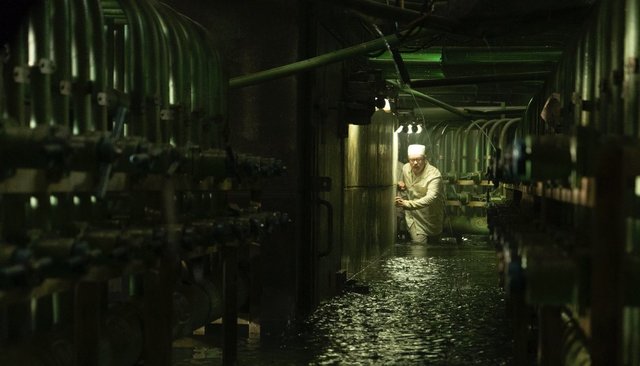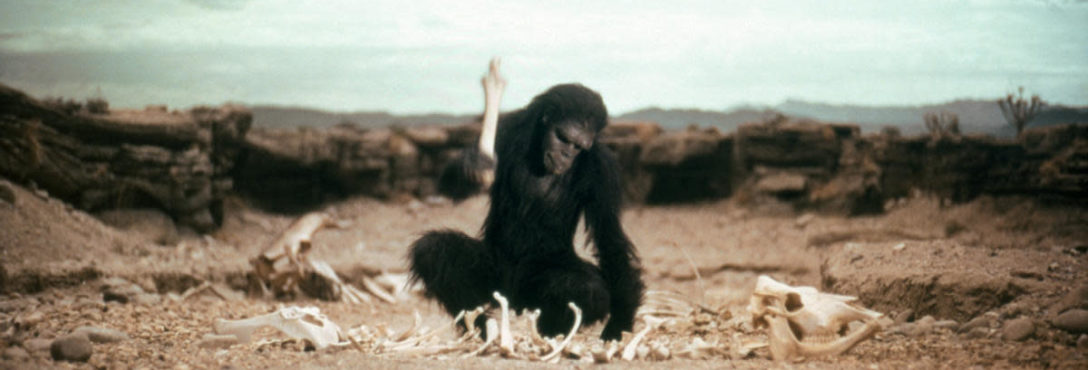HBO’s Chernobyl (Mazin, 2019) has been met with near unanimous critical and commercial success since its release. The programme is a caustic and at points genuinely terrifying excavation of the 1986 Chernobyl nuclear disaster. It unveils the intricacies of how this event came to pass, as well as the crushing political and practical turmoil of how it was, and indeed wasn’t, handled. The less journalistic and more human aspect of the programme also triumphs. The programme allows time for some deeply affecting and hauntingly contemplative moments. Soldiers tasked with the shooting of stray animals around Pripyat stands out in particular here. What is perhaps most striking about Chernobyl however is just how good a job it does of making radiation scary. & be assured, nuclear radiation is very scary.

“Chernobyl is on fire. Every atom of Uranium is like a bullet penetrating everything in its path; metal, concrete, flesh. Chernobyl holds over 3 trillion of these bullets. Some of them will not stop firing for 50,000 years.” – Dr. Legaslov (Jared Harris)
Jared Harris’ whispering intensity as Dr. Legaslov goes some way to conveying the dramatic and apocalyptic nature of unbounded nuclear radiation, but the programme cannot rely on Harris all together. This presents some representational hurdles for the series to overcome. Nuclear radiation is both invisible and silent, which makes it rather a difficult spectre to represent and capture in an audio-visual medium. Moreover, radiation operates on timescales that are discombobulatingly dwarfing compared to the scalar limits of human existence. Chernobyl will continue to be fatally radioactive for 50,000 years. Let’s put those 50,000 years in context:
- 2,500 years ago – Alexander the Great burns Persepolis
- 4,500 years ago – The Pyramid of Giza is completed
- 7,000 – 10,000 years ago – Transition is made from nomadic hunter gathering to farming and permanent settlement
- 20,000 years ago – The last ice age
- 30,000 years ago – Neanderthals become extinct
50,000 years is an almost unimaginable amount of time to grapple with; it houses almost the entirety of human history and is really on the limit of what we know of ourselves and our lineage. Nuclear radiation comfortably sits within these scales. Some nuclear waste has a half life of closer to 100,000 years, as detailed in Michael Madsen’s Into Eternity: A Film for the Future. The dizzying scalar discrepancy between something that’s so small we cannot see it, yet exists densely across deep-time, speaks to the steady encroachment of hyperobjects in the contemporary moment. Industrial modernity has created a series of ‘objects’ that are massively distributed across space and time, yet near impossible to see. Climate change is also a hyperobject, wherein small things (car journeys) and big things (the natural accruement of oil in the ground) are inextricably linked. Hyperobjects, a term and concept coined by Timothy Morton in his book by the same title, offer an instructive window into the reality of human/earth interactions in the 21st century, yet present huge representational challenges for commercial and artistic productions. As Legaslov rightly notes; ‘the atom is a humbling thing’. Chernobyl is an interesting case study in how to harness and convey the haunting force of hyperobjects, in this case radiation.

An impenetrably black chunk of rock lurks on the floor outside of the flaming reactor as firefighters attempt to douse the flames. A firefighter picks it up, moments later his hand is melting. This unnerving spectacle of the seemingly inert yet vibrantly deadly rock returns throughout the programme. These graphite rocks are now the most dangerous substance on the planet; so radioactive that over 90 seconds exposed in the same 5-metre radius will be fatal. The chunks of graphite, which now litter the area around reactor 3, are used by Chernobyl to distil the hugely spatially and temporally dispersed nuclear threat into one spatially contained and temporally contemporaneous object. We are given a plaintive impression of the radioactive dust that spreads across the continent, haunting detail of the staggering (if criminally tardy) efforts to evacuate and ecologically annihilate all forms of non-human life surrounding Chernobyl (for thousands of square kilometres), yet the existential horror of nuclear radiation seems to finds form most profoundly in these rocks.
The most striking of these sequences details the efforts to clear the roof above the reactor, described by Boris Shcherbina as the most dangerous place on Earth. Roof ‘Masha’, as they refer to it, contains so much radioactive graphite (12,000 roentgen per hour) that even lead-lined robots cannot withstand exposure to it; ‘that amount of radiation penetrates everything, the particles literally shred the circuits in microchips apart. If it’s more complicated than a light switch…Masha will destroy it.’ Following a historically mind-bending scene showing lunar robots clearing out two of the less-radioactive roofs, the task of clearing Masha comes into fruition.
To address the taxing task of conveying an invisible and silent threat, Chernobyl layers this haunting scene with a distinctly sci-fi sensibility to convey the other-worldly horror of it all. The sequence itself reminds me of the lunar monolith sequence in 2001: A Space Odyssey. In Kubrick’s film the eerie vibrancy of the black monolith is as enticing as it is scary; the astronauts approaching it slowly, cautiously and ultimately fatally. An uncannily similar lithic entity seems present in Chernobyl. The graphite on the roof is a black rock that is at once inert and also alive with a deadly alien energy that increases with intensity as the soldiers approach, exactly like the monolith. Furthermore, the soldiers’ make shift lead armour suits have the same sort of clunky retro-aesthetic charm as the space explorers of Kubrick’s film (seen below). Moreover, the gradual increase in intensity of the roentgen metre’s clicking through Chernobyl‘s soundtrack seems evocative of the rising cacophony of choral warbling found in the 2001 sequence.

To walk on roof Masha is perhaps as close as any human has ever got to walking through an utterly alien zone. Couple this with the cognitive extraction necessary for thinking through the sheer deadly force of these rocks, it seems unsurprising that the programme falls back on science fictional referents here. Both the monolith and these rocks exist on timescales that dwarf the human, yet are inextricably tied to the human. Science fiction provides a robust and familiar framework for thinking through the unfamiliar. Chernobyl‘s depiction of radioactive rocks sees this representational strategy in action, where the aesthetic line between historical fact and science fiction become blurred.
Watching Chernobyl invites us to look back not just into deep time, and Soviet history, but also into our current moment. How might we look back on ourselves in a hypothetical HBO mini-series made 40 years from now entitled Climate Change? All of the technology in the world exists to switch to carbon neutral renewable energy, yet we still do not do so. All the science informs us of the unprecedented scale of the situation, and the urgency to act, yet many highly polluting countries (such as the USA) still do next to nothing. We are living in a moment of disaster not too different from Chernobyl; borne of industrial carelessness and worsened by a lack of appropriate response. Who might be the Dyatlov’s of the future? Can the blame so easily be portioned out?

Legaslov’s closing speech powerfully tells us that each lie we tell incurs a debt to the truth; ‘what is the cost of lies?’ In the 21st century and beyond each action we take, be it airplane journeys, beef burgers or the clothes on our back, incurs a debt to the planet. Chernobyl, while ostensibly about the nuclear disaster of 1986, seems a blueprint to think more carefully about the environmental disasters unfolding around us right now. Just as the bio-soldiers have to encounter the deadly graphite rocks that haunt the reactor’s buildings, we too have to engage with the geological agency and deep timescales we find ourselves bound up to in the Anthropocene. Just as radiation is impossible to see without mediation, so too are the rising temperatures and collapsing ecosystems of our planet; the individual human can only experience small slithers of this larger hyperobject at a time. When watching Chernobyl we should certainly think of 1986, but it seems more pressing to simultaneously ruminate on the present day global environmental crisis. Chernobyl is not just a haunting account of the USSR’s 1986 nuclear disaster, but a cautionary window into the coevolving disaster of the Anthropocene.
